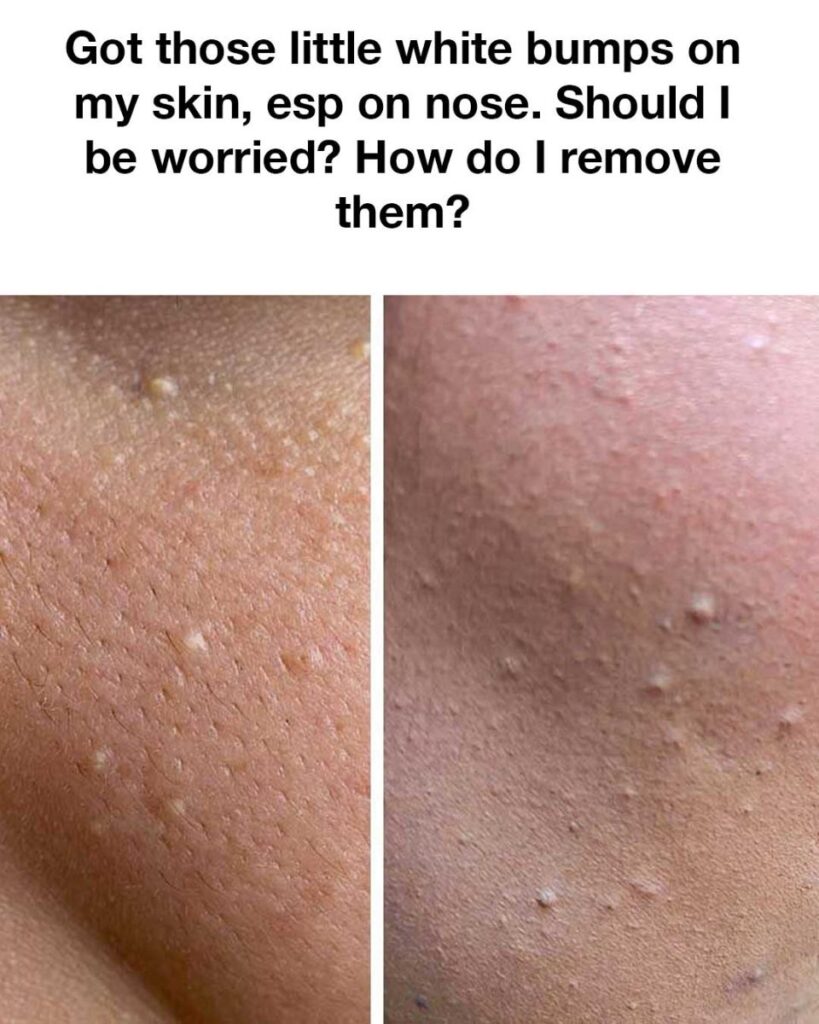Are you noticing small white bumps on your skin, particularly on your nose?
These unsightly marks can be a source of considerable frustration and even concern for many individuals.
While it’s easy to dismiss them as simple pimples or blackheads
understanding what these bumps could be is paramount for effective treatment and peace of mind.
Knowing the common causes and remedies can significantly help in managing these minor skin imperfections.
These little white bumps are generally a type of acne called milia. Milia are keratin-filled cysts that form just under the skin, typically appearing as small, white, or yellowish bumps. Unlike regular acne, milia don’t have an opening which makes them not easily squeezable or treatable with standard over-the-counter acne medications. The importance of proper diagnosis and treatment cannot be overstated, as inappropriate methods might exacerbate the problem or even cause scarring.

Should I be worried?
1. Benign Nature
Milia are generally benign and not harmful. They are more of a cosmetic issue than a medical problem. However, if you notice other symptoms like swelling, pain, or redness, it may require medical attention.
2. Persistence
While milia are usually harmless, they can be persistent. If left untreated, they can remain for months or even longer. Being proactive about treatment often helps to rid them sooner.
3. Underlying Issues
In rare cases, the presence of milia can indicate underlying health conditions, especially if they appear suddenly and in large numbers. Consulting a dermatologist is advisable if you have concerns or if the bumps don’t go away over time.
How do I remove them?
1. Extraction by a Professional
One of the most reliable methods to remove milia is through professional extraction. Dermatologists or licensed skincare professionals have the tools and expertise to remove them without causing infection or scarring.
2. Topical Retinoids
Prescription treatments like retinoid creams can help speed up the natural exfoliation process, making it easier for the trapped keratin to surface and the milia to clear up. It is recommended to consult a dermatologist for this type of treatment.
3. Over-the-Counter Exfoliants
Products containing alpha hydroxy acids (AHAs) or beta hydroxy acids (BHAs) can help exfoliate the skin and encourage the turnover of skin cells, making it easier for milia to disappear. Consistent use is key for the best results.
4. Home Remedies
Some people find benefits using home remedies like steaming the face to open pores or using gentle facial scrubs. However, these methods should be done with caution to avoid irritation.
5. Avoid Heavy Creams and Oily Products
Products that clog pores can contribute to the formation of milia. Opt for non-comedogenic skincare products to minimize the risk.
While the presence of small white bumps on your skin can be bothersome, they are generally harmless and treatable. Understanding what they are and choosing the right treatment methods can help you achieve clearer, bump-free skin. If in doubt, always consult a healthcare professional for personalized advice.



